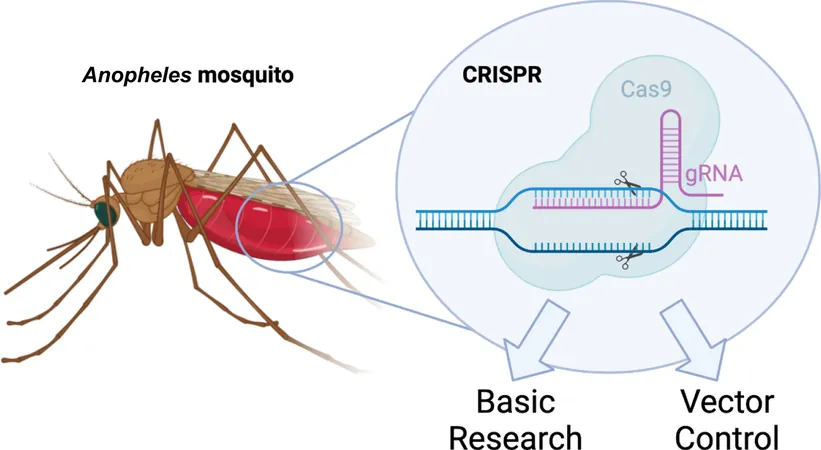
The Math Behind Our Deepening Political Divide: Insights into Affective Polarization
2025-05-06
Author: Wei Ling
Understanding Our Divided Nation
In an era where political affiliations define our interactions, what do Democrats and Republicans share? A deepening mistrust and animosity toward one another. Recent groundbreaking research from the USC Viterbi Information Sciences Institute, along with the University of Iowa and Claremont Graduate University, explores the concept of "affective polarization"—the emotional schism that shapes how individuals make decisions, especially on vital issues such as vaccination.
The Rise of Emotional Polarization
"We wanted to unravel why opinions diverge so rapidly," says Kristina Lerman, Principal Scientist at ISI and the study's lead. "It's clear that political issues become polarized, but why do people adopt entirely conflicting viewpoints?"
A Revolutionary Mathematical Model
The research team, spearheaded by Buddhika Nettasinghe, developed a powerful mathematical model that simulates decision-making in an emotionally charged society. This model categorizes individuals as having "in-group love"—a preference for their own group—and "out-group hate," which manifests as distrust toward opposing factions. This emotional backdrop heavily influences behavior; confronted with choices like masking or vaccination, people tend to align with their in-group, shunning any actions from the out-group.
Key Insights into Group Dynamics
The model provided eye-opening revelations about the nature of polarization. Lerman remarked, "Our findings illustrate that a society can either reach consensus or splinter deeply along party lines, with each faction steadfastly believing in contradictory truths." The research indicates that the animosity toward the out-group is a significant factor driving societal division. When out-group hate eclipses in-group love, consensus becomes virtually unattainable.
The Paradox of Connections
A surprising twist emerged from their simulations: fostering interactions across party lines often exacerbates polarization instead of bridging differences. This revelation challenges the long-standing belief that stepping outside echo chambers can promote unity. The model demonstrated that increased interactions prompt individuals to engage less with their personal convictions and more with the desire to oppose the other side. Even where there is initial agreement, heightened awareness of partisan divides can create greater rifts.
Affecting Everyday Decisions
The implications of this research are far-reaching, elucidating why decisions seemingly unrelated to politics—such as beverage choices, vehicle selections, and even sports fandoms—are increasingly colored by political identities in a polarized environment. Lerman and her team are now pivoting their focus toward strategies that could curb these damaging emotional divides.
Solutions for a United Future
Looking ahead, Lerman suggests that media and social networks have pivotal roles to play in tempering polarization. By shifting focus away from partisan conflicts and connecting individuals through shared interests, we might mitigate the very reactions that deepen societal divides. The quest for unity in a fractured landscape continues.




 Brasil (PT)
Brasil (PT)
 Canada (EN)
Canada (EN)
 Chile (ES)
Chile (ES)
 Česko (CS)
Česko (CS)
 대한민국 (KO)
대한민국 (KO)
 España (ES)
España (ES)
 France (FR)
France (FR)
 Hong Kong (EN)
Hong Kong (EN)
 Italia (IT)
Italia (IT)
 日本 (JA)
日本 (JA)
 Magyarország (HU)
Magyarország (HU)
 Norge (NO)
Norge (NO)
 Polska (PL)
Polska (PL)
 Schweiz (DE)
Schweiz (DE)
 Singapore (EN)
Singapore (EN)
 Sverige (SV)
Sverige (SV)
 Suomi (FI)
Suomi (FI)
 Türkiye (TR)
Türkiye (TR)
 الإمارات العربية المتحدة (AR)
الإمارات العربية المتحدة (AR)